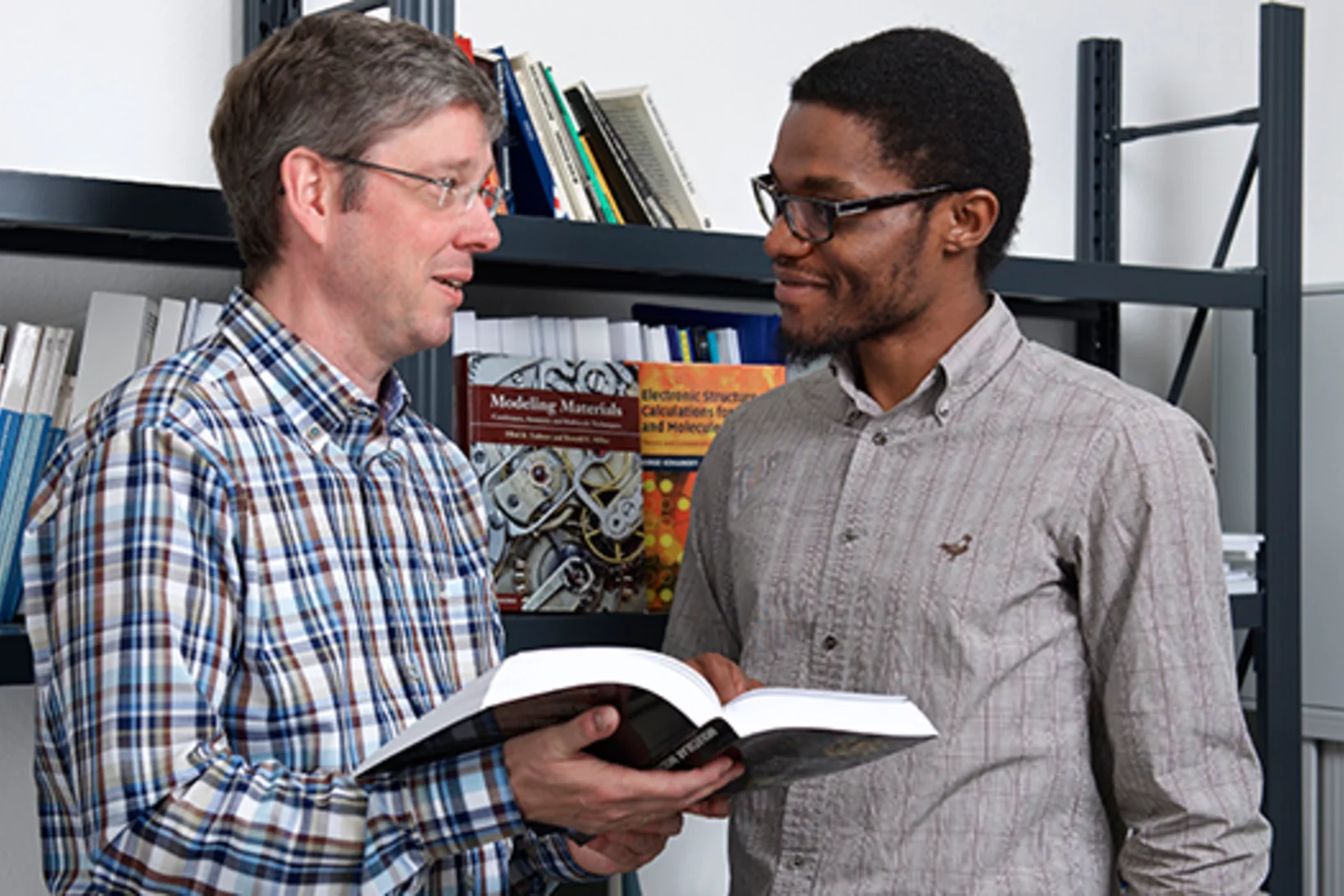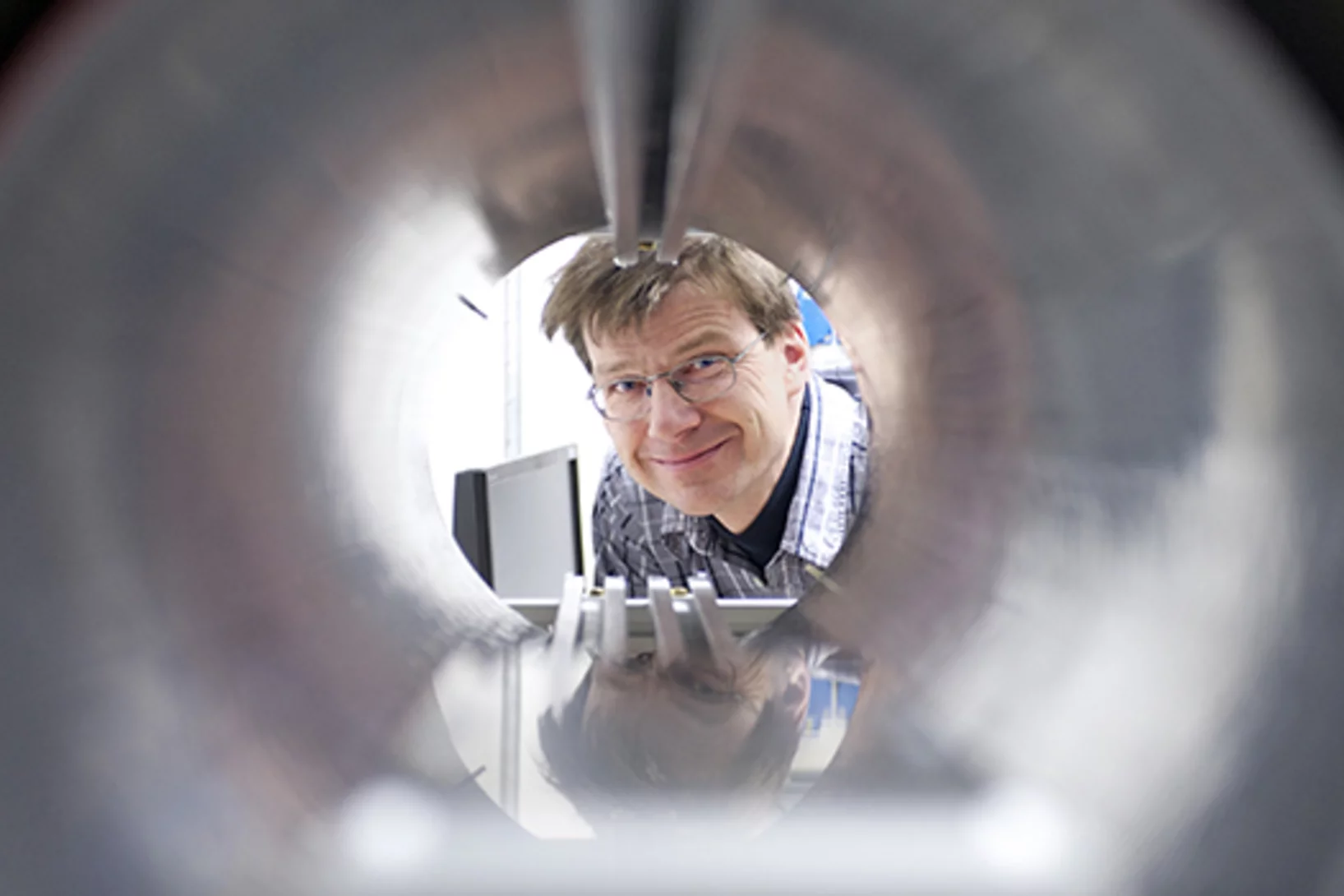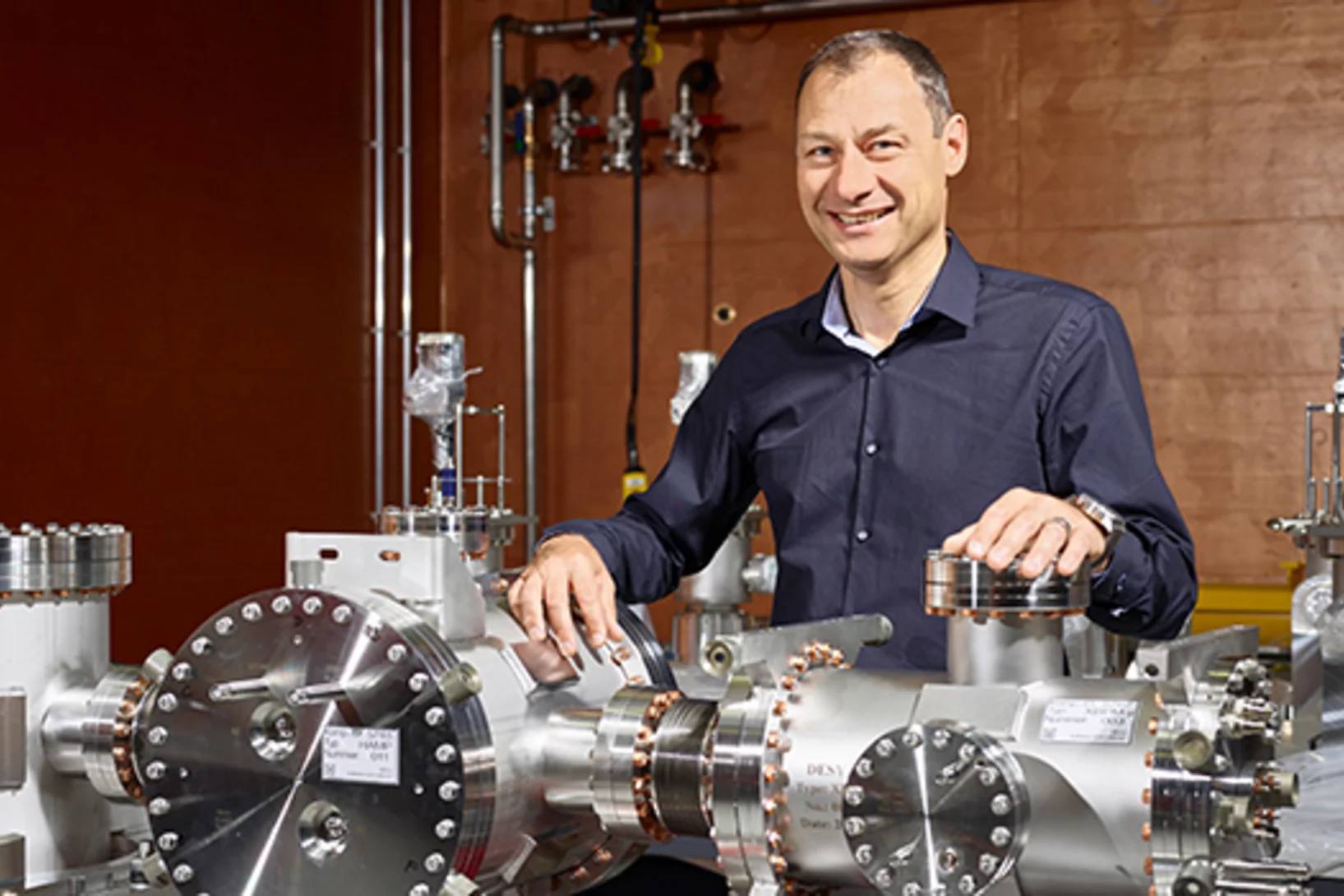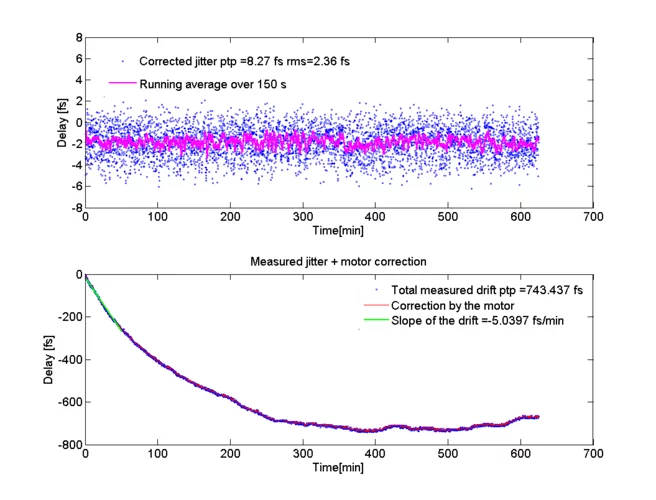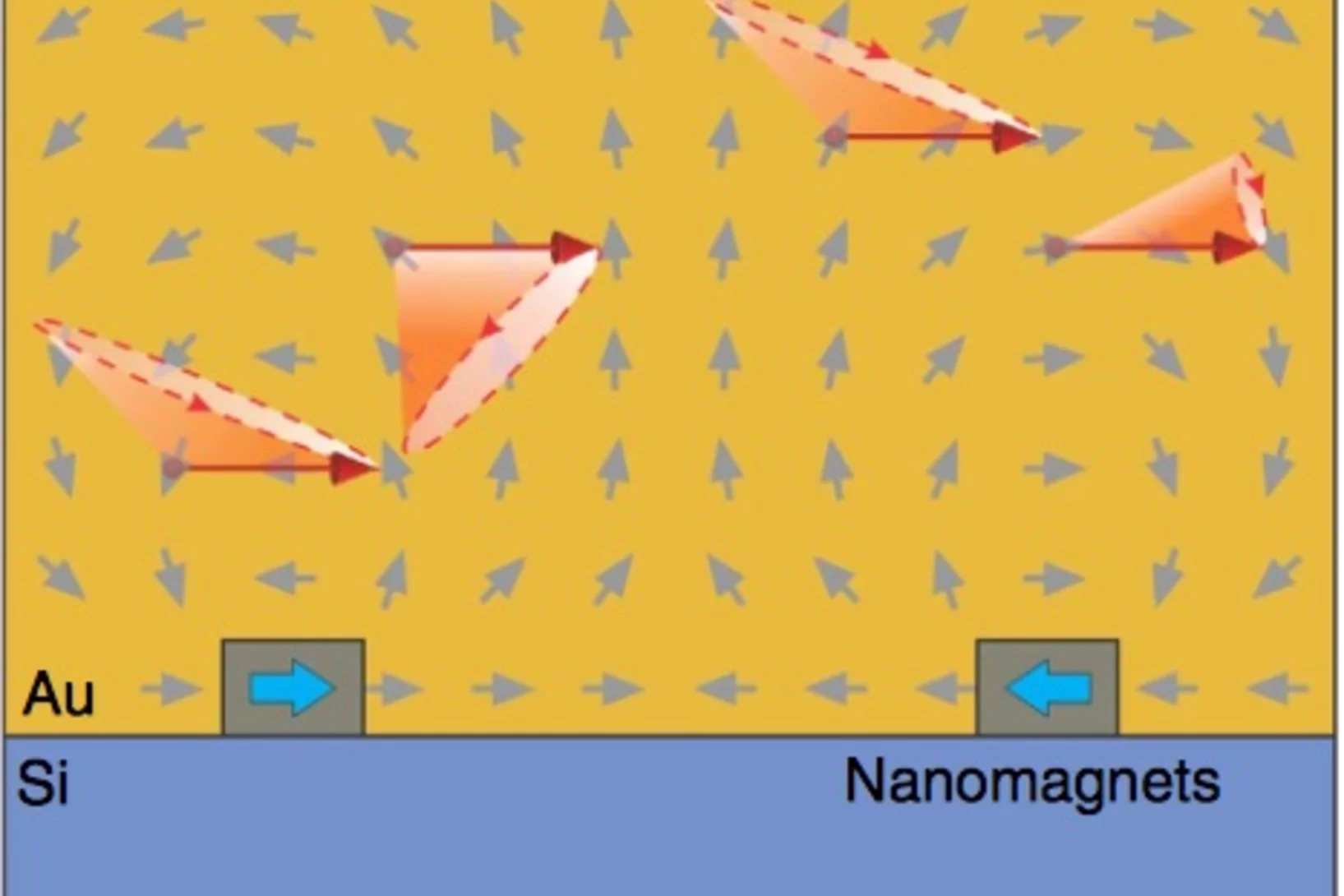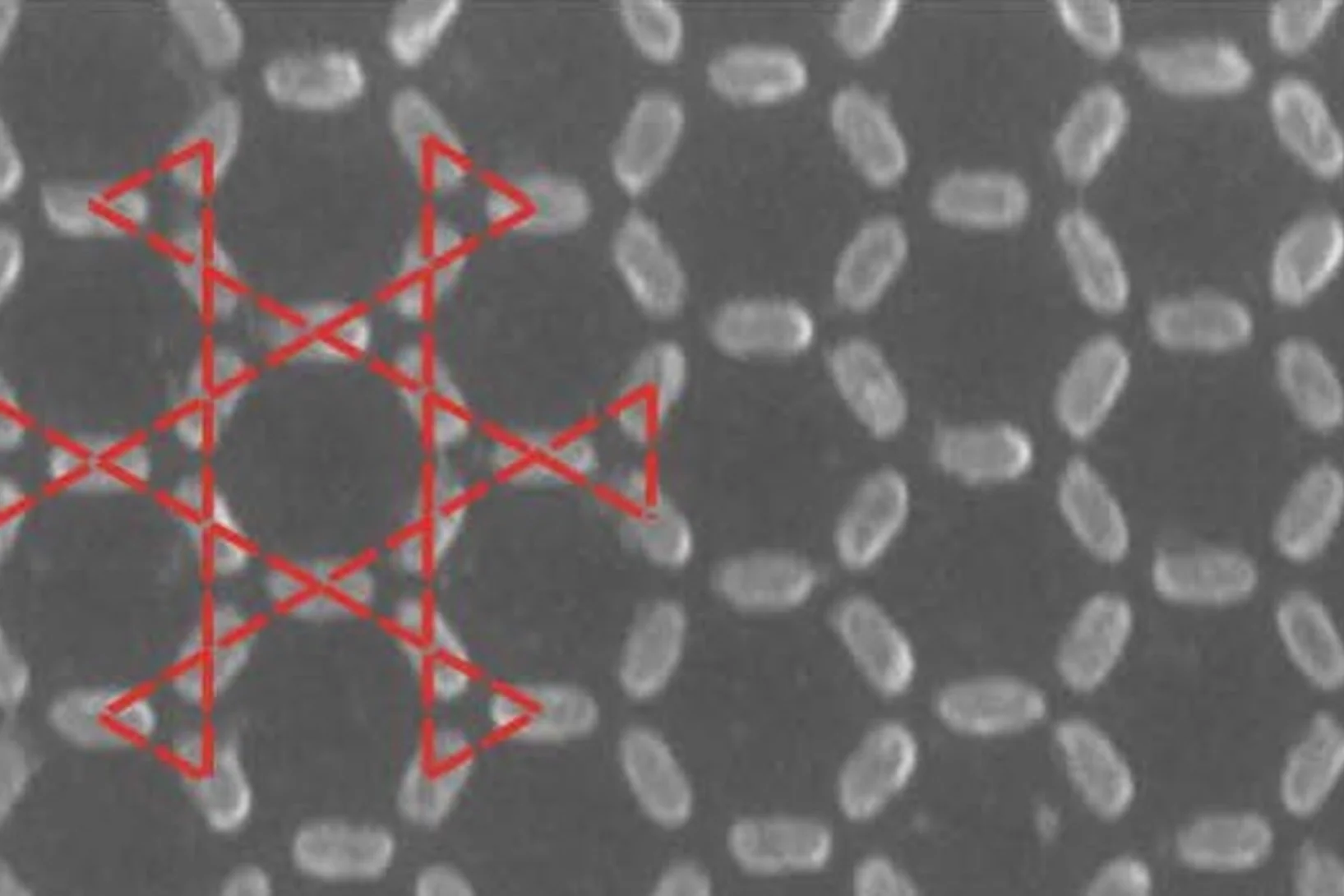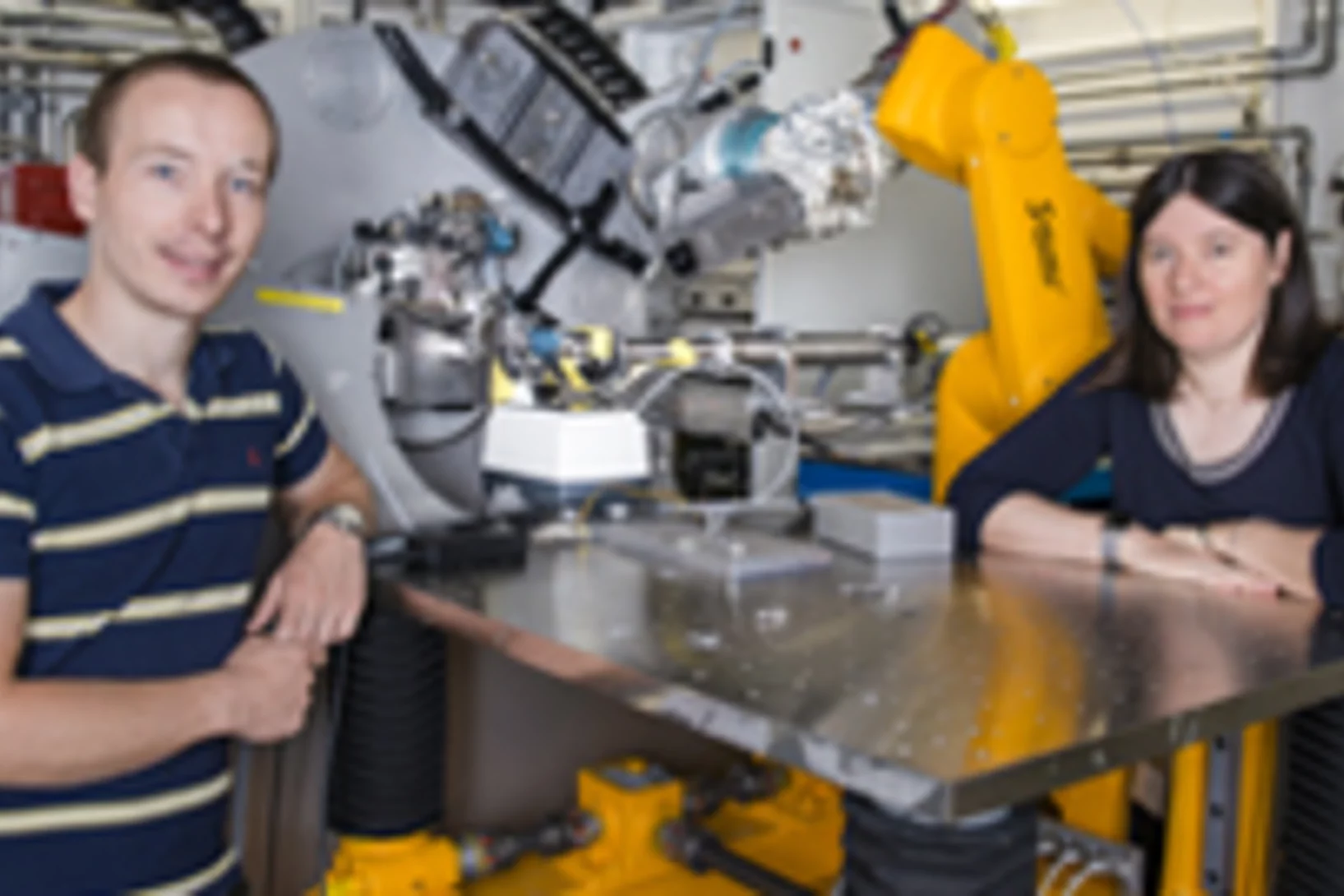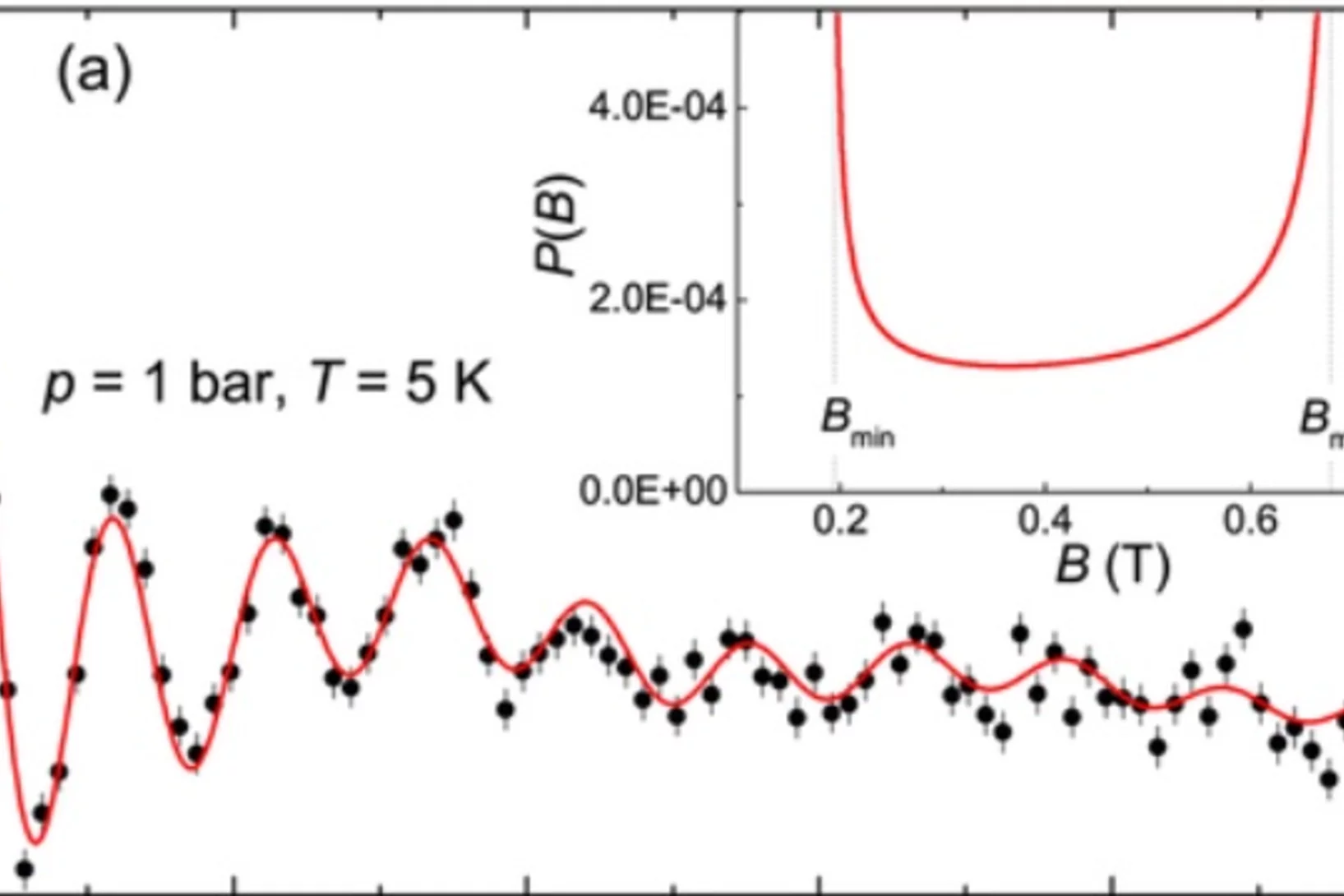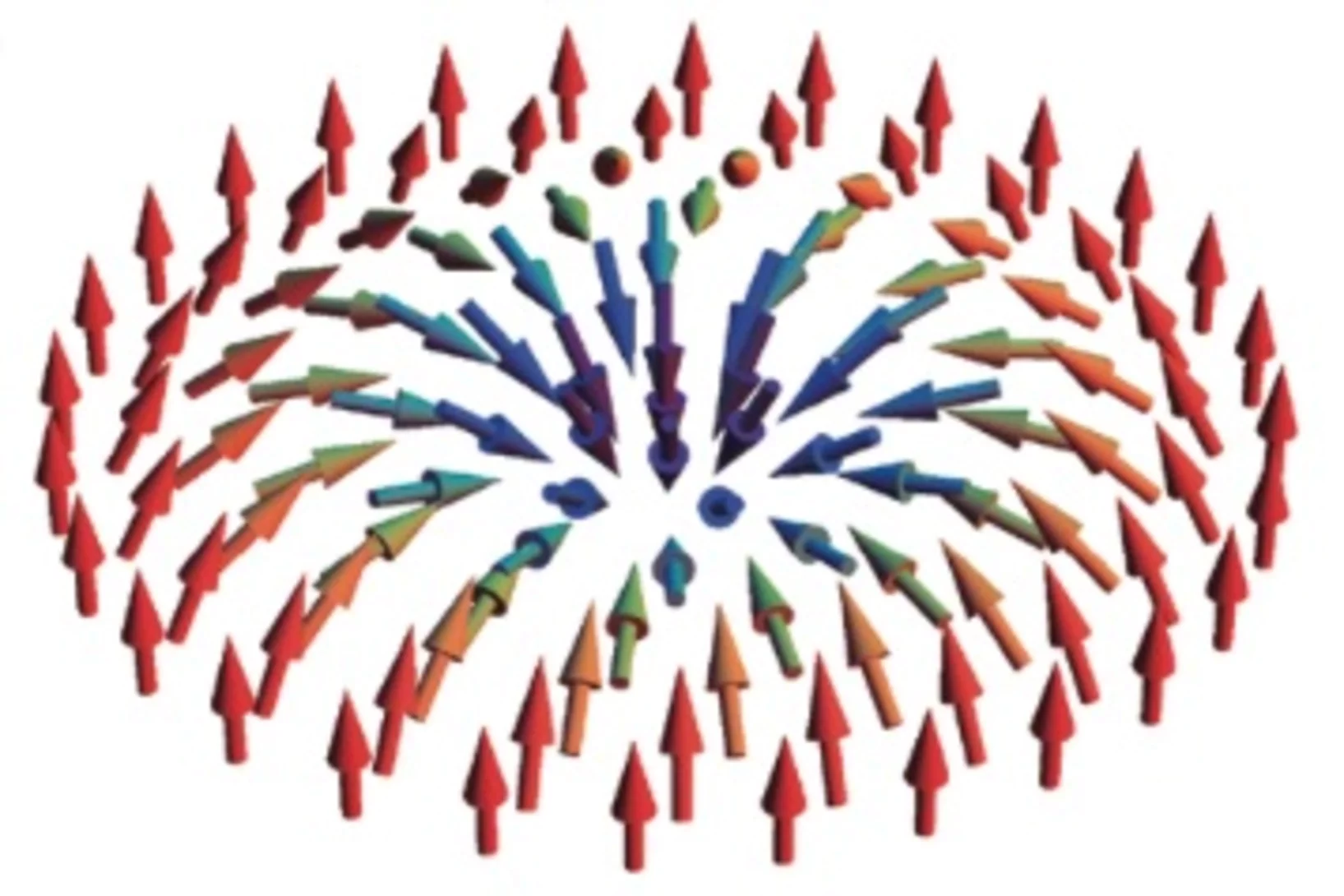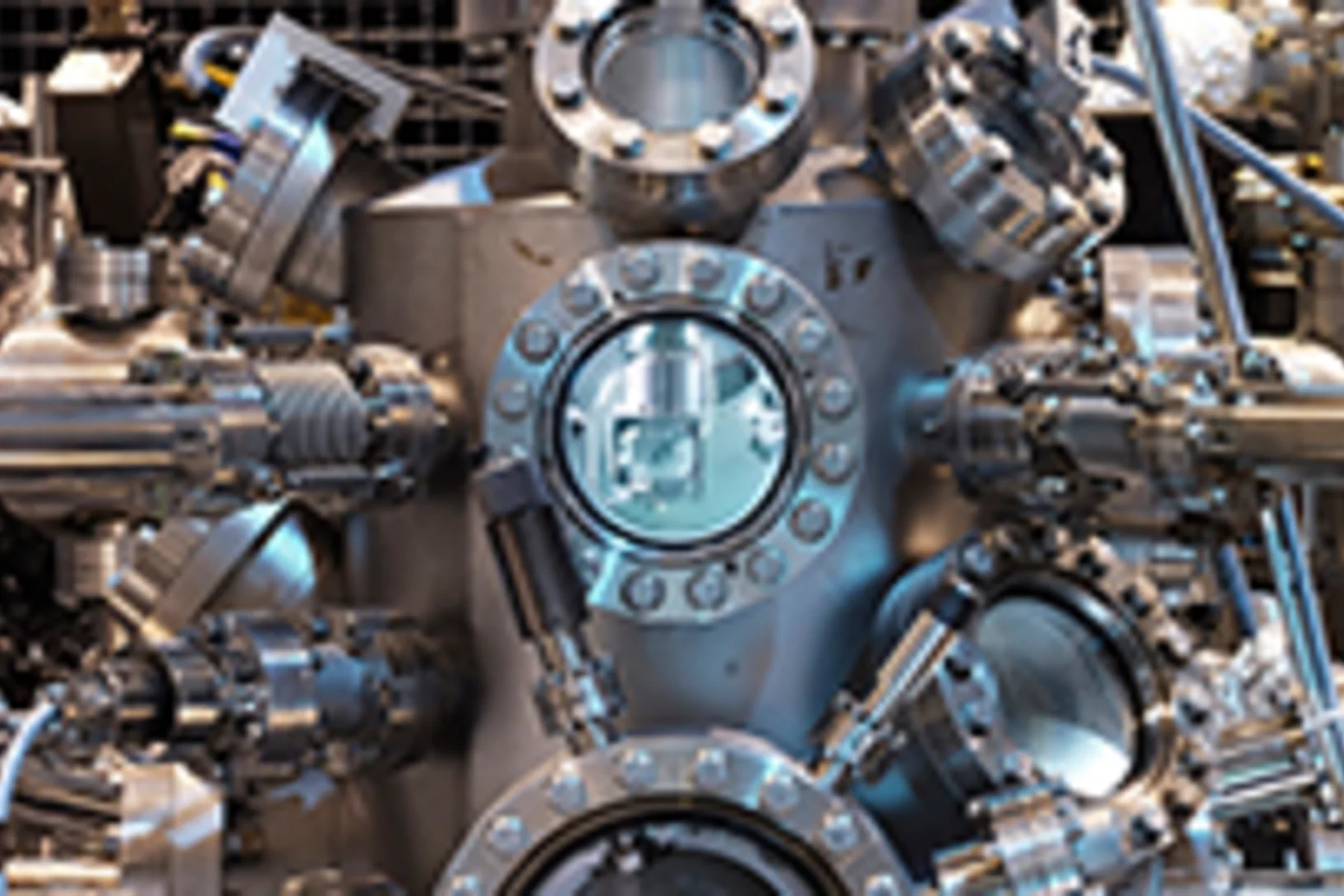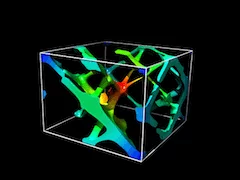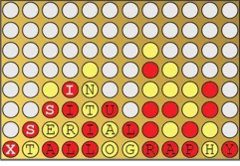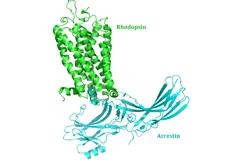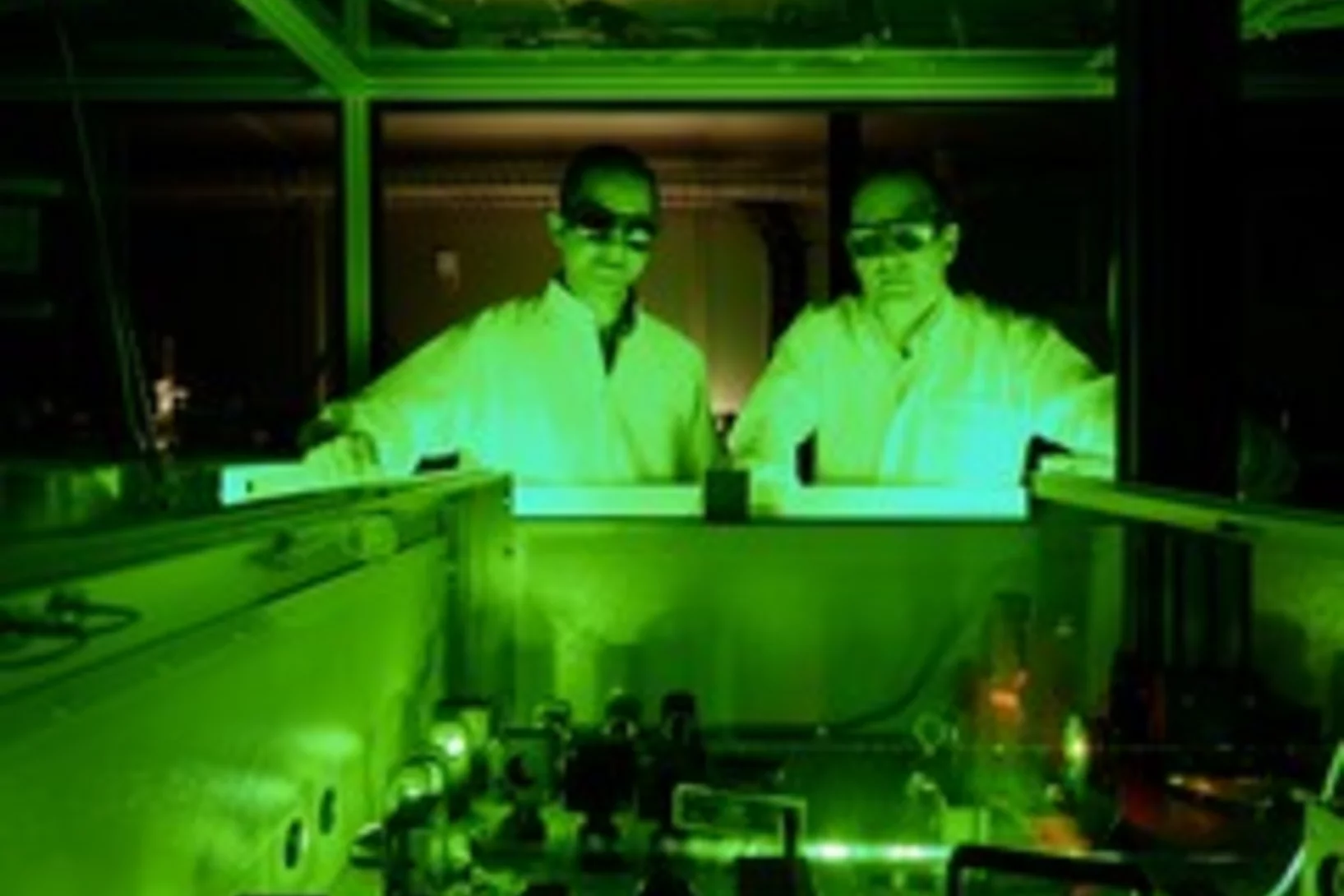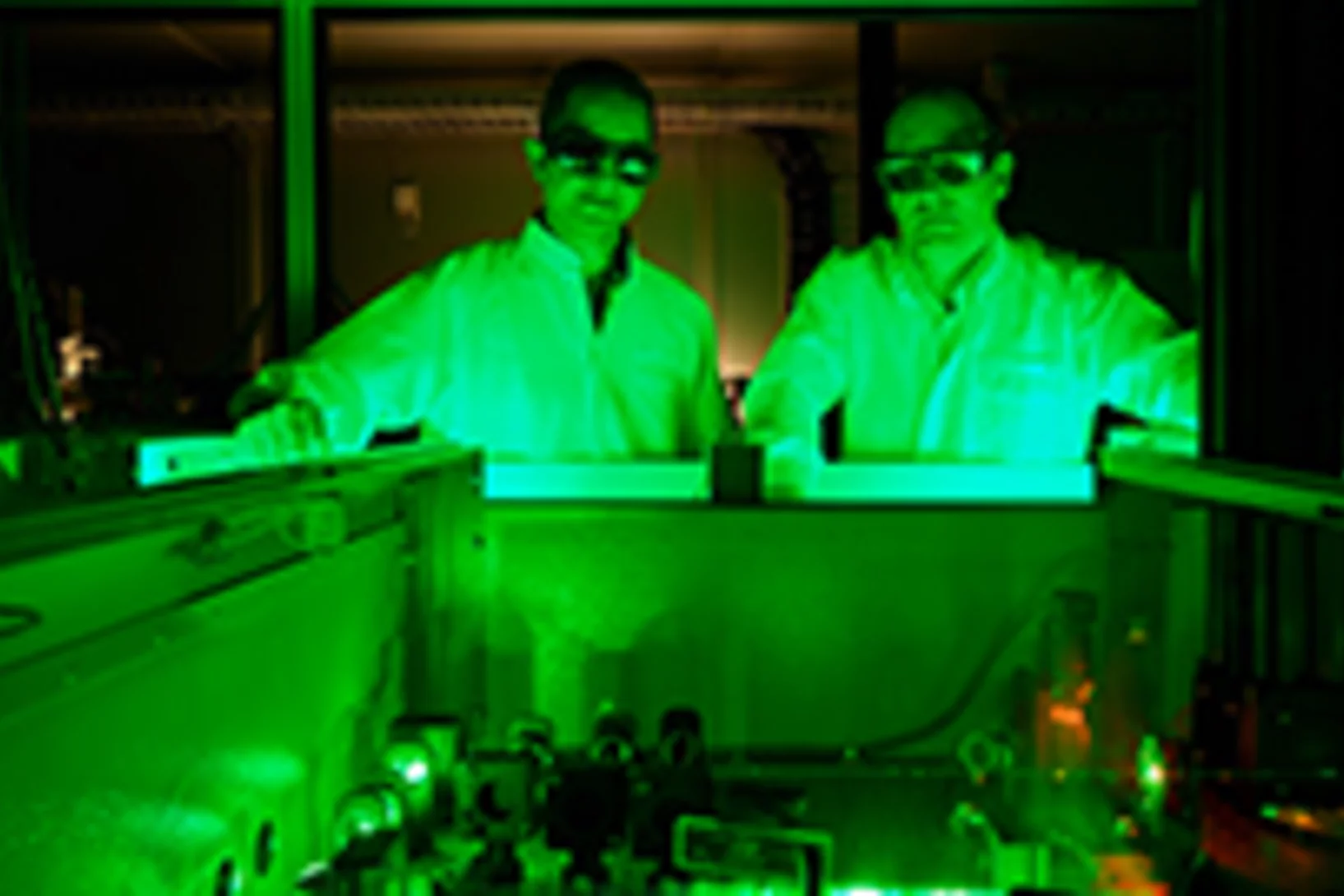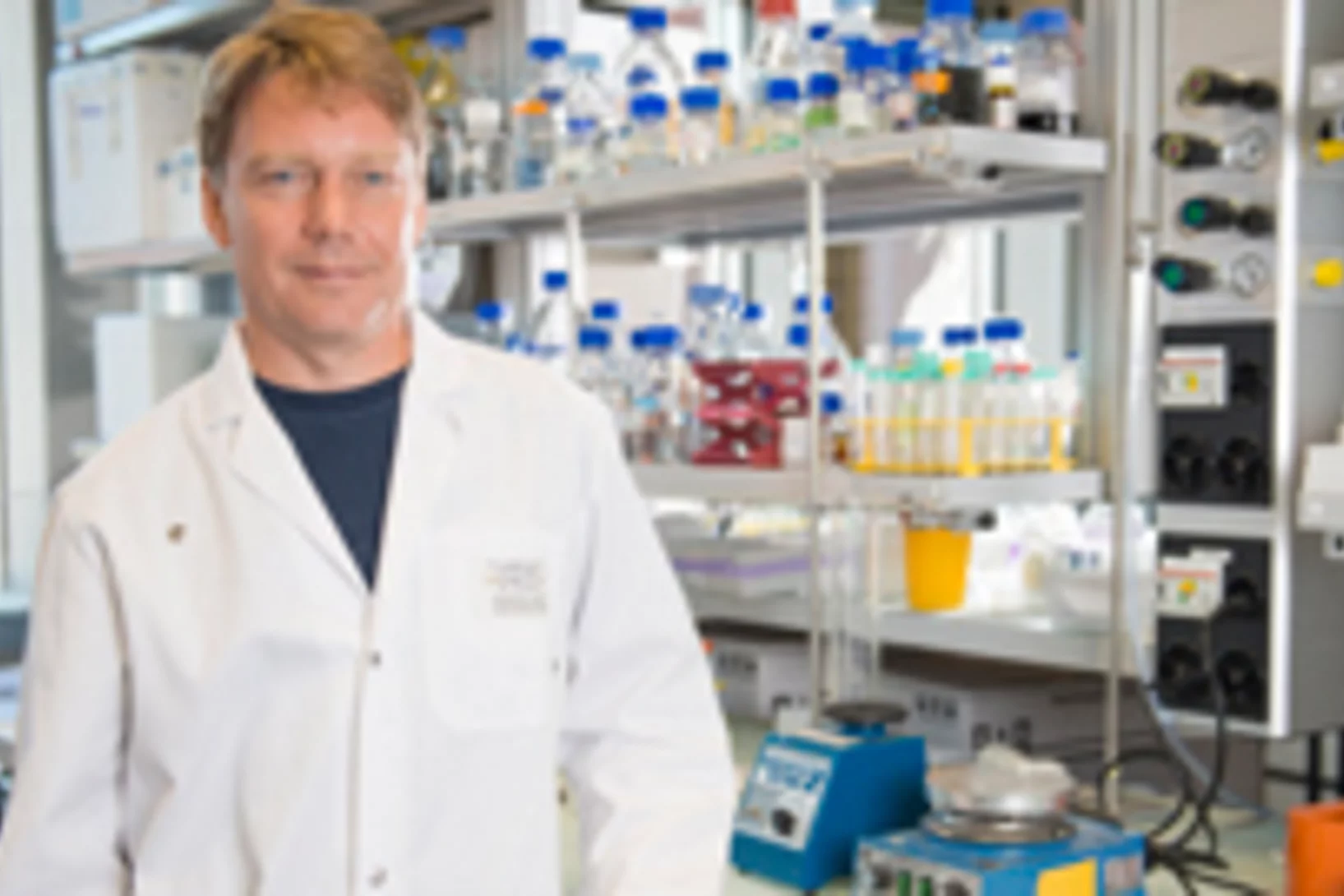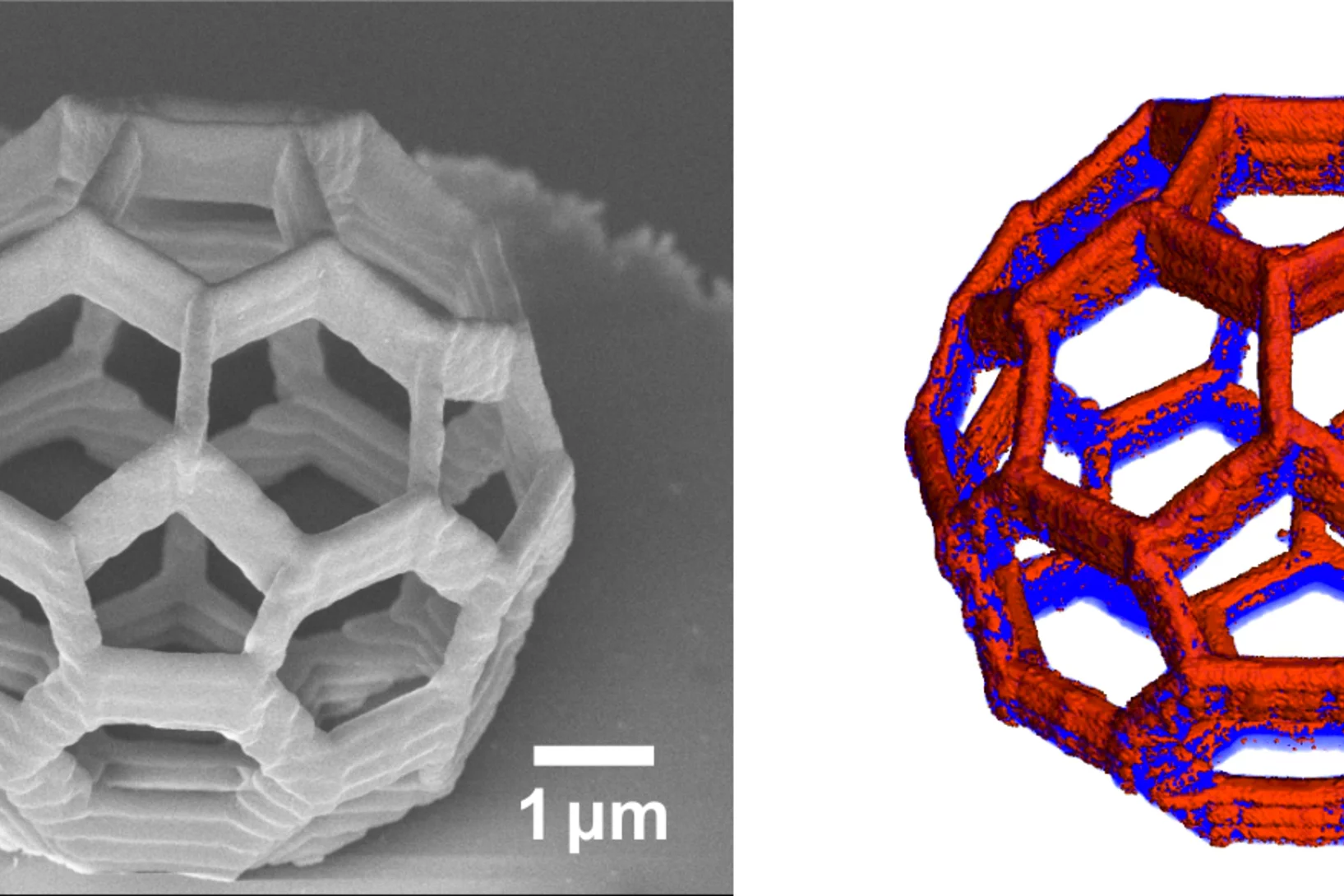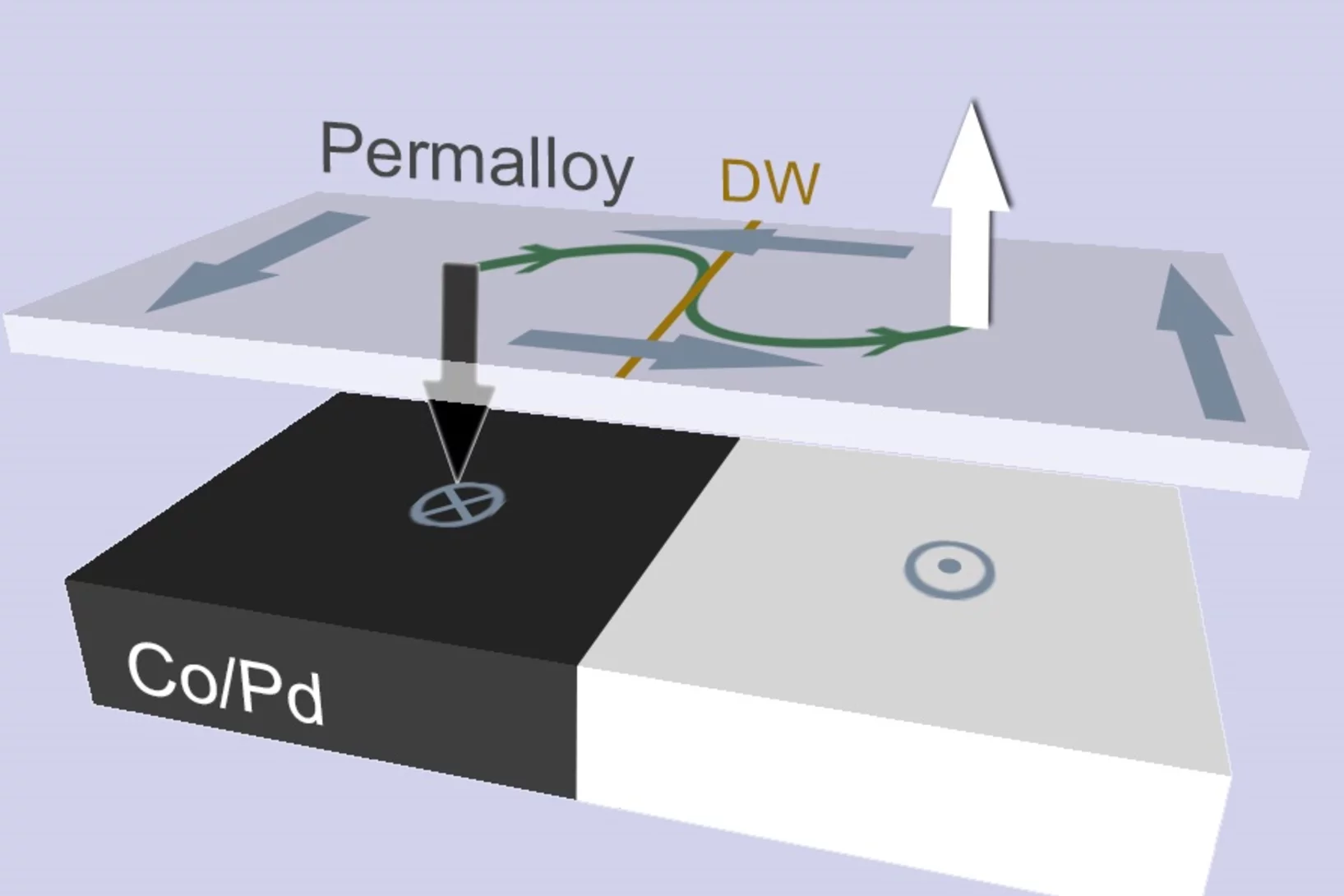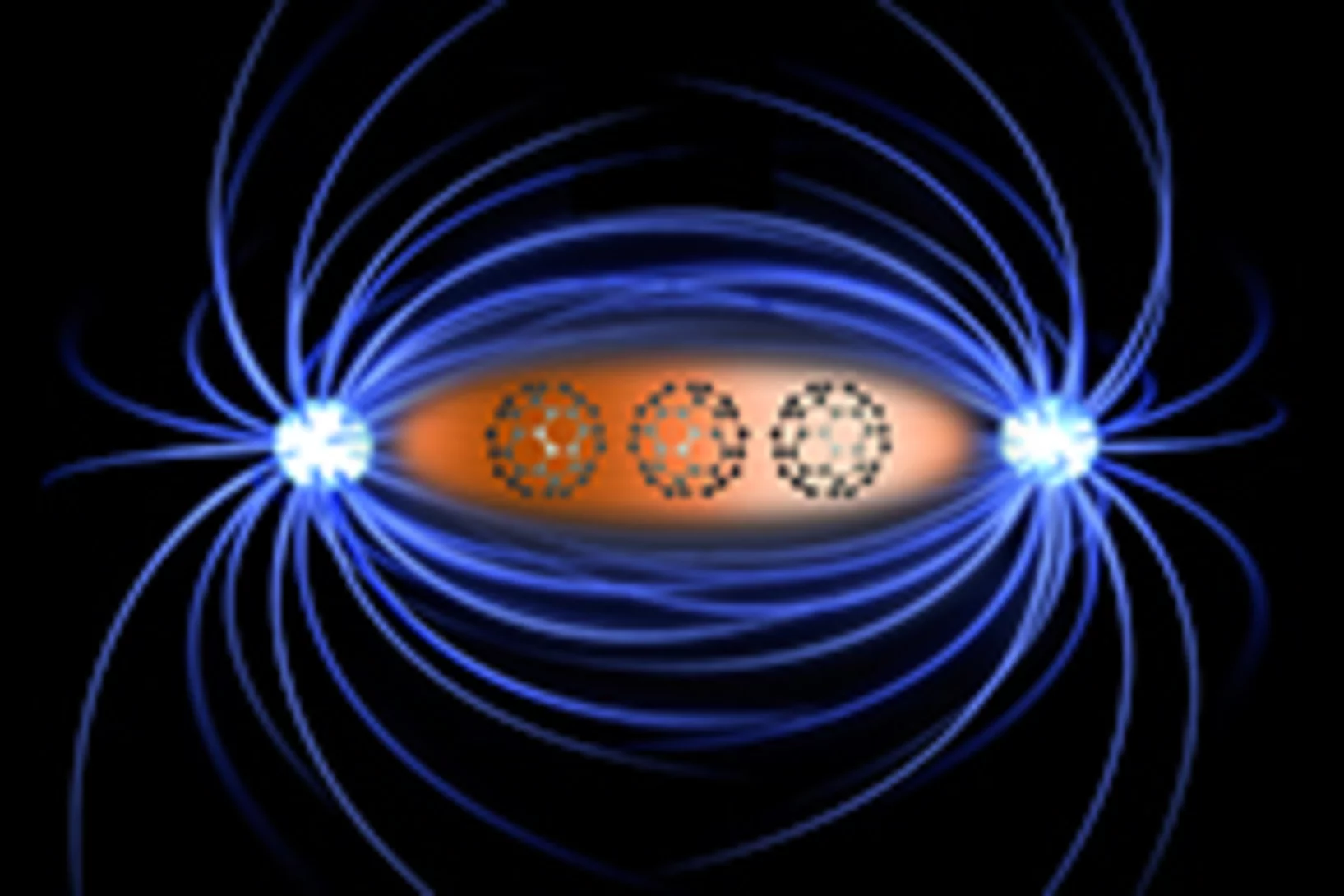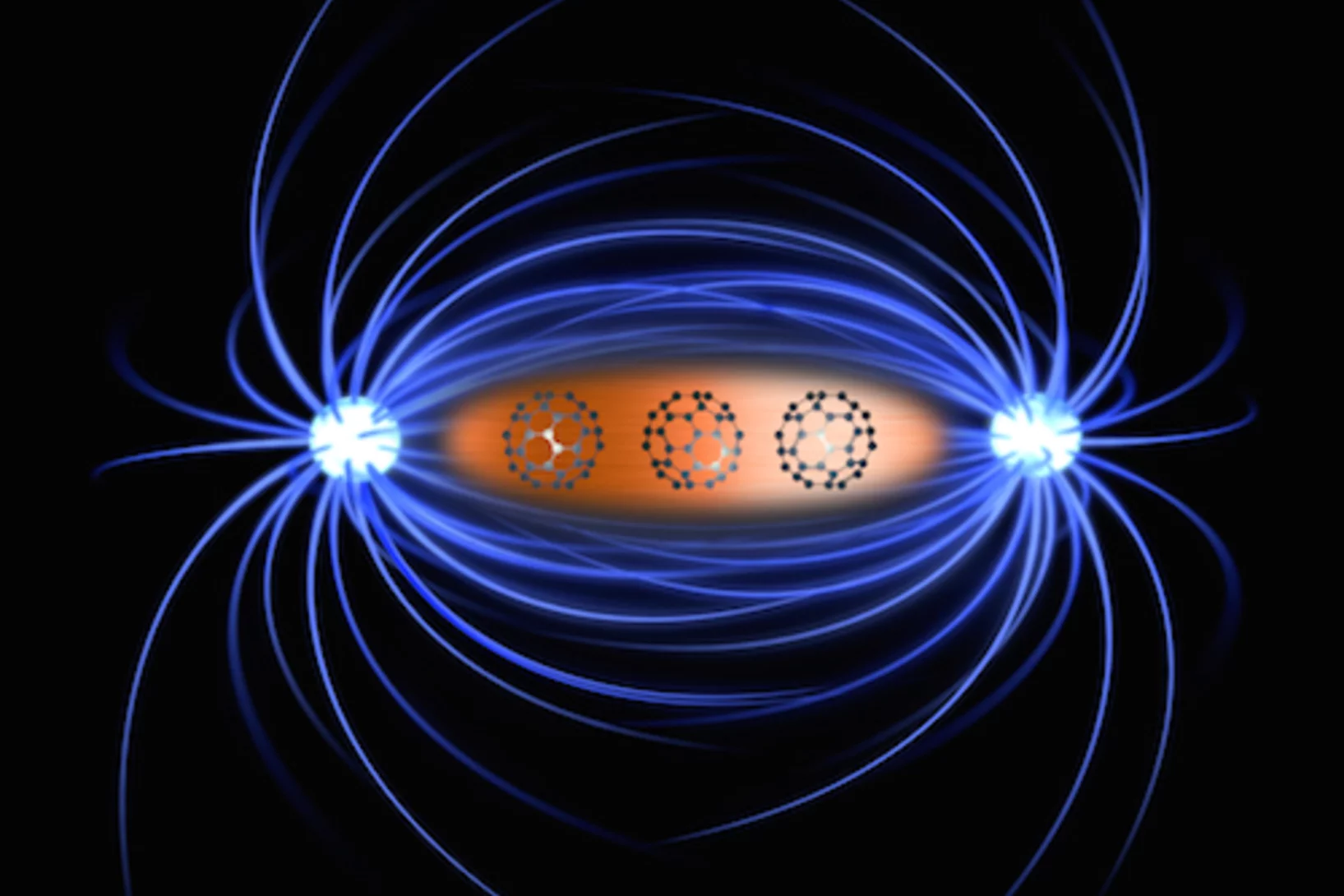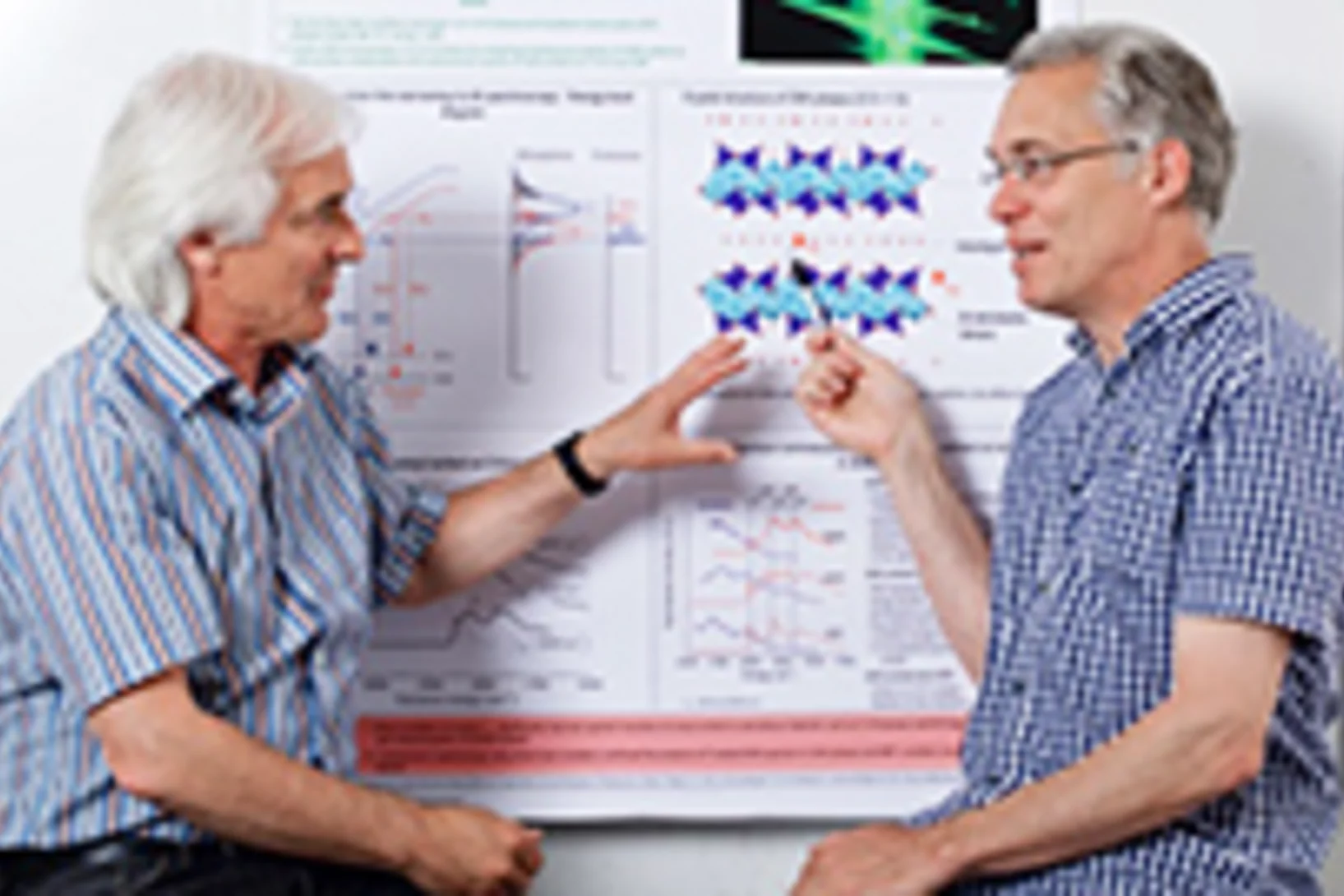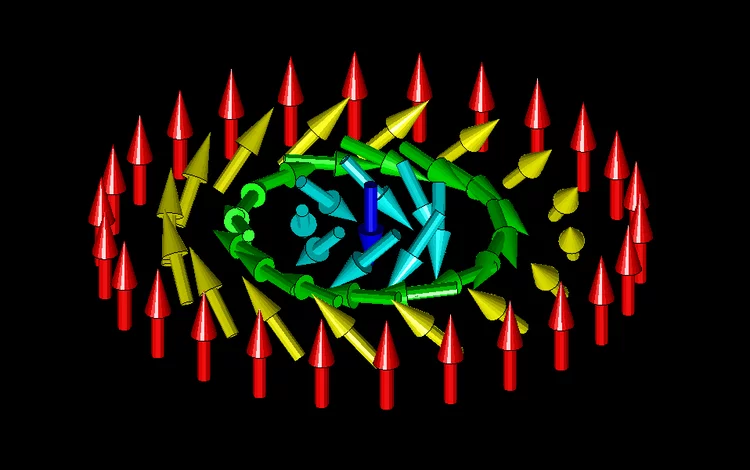Abandon de l’énergie nucléaire, développement de l’énergie solaire et éolienne, production d’énergie à partir de la biomasse, réduction de la consommation d’énergie. D’ici 2050, la Suisse doit atteindre la neutralité climatique. Un objectif ambitieux, rendu plus urgent que jamais par une situation géopolitique de plus en plus difficile. Comment faire pour mettre en place ces prochaines années un approvisionnement énergétique durable et résistant pour la Suisse? Comment les énergies renouvelables peuvent-elles être utilisées de manière optimale? Quelles sont les nouvelles technologies les plus prometteuses? Au PSI, des chercheurs s’efforcent de trouver des réponses à ces questions décisives.
Une plus grande robustesse grâce aux imperfections
Le dioxyde d’uranium, combustible des centrales nucléaires, résiste mieux aux dégâts causés par les radiations quand sa structure présente des écarts microscopiques par rapport à un agencement idéal.
2015 Otto Kratky award
Marianne Liebi was awarded the 2015 Otto Kratky award by the Helmholtz-Centre Berlin for excellence in the field of small-angle X-ray scattering (SAXS) analysis. The award was bestowed in the last SAS2015 conference in Berlin. Marianne is a postdoctoral fellow in the coherent X-ray scattering group (CXS) in PSI, carrying out research in scanning SAXS measurement and analysis in 2D and 3D. Image credit ©HZB/Michael Setzpfandt
Remotely induced magnetism in a normal metal using a superconducting spin-valve
Superconducting spintronics has emerged in the past decade as a promising new field that seeks to open a new dimension for nanoelectronics by utilizing the internal spin structure of the superconducting Cooper pair as a new degree of freedom. Its basic building blocks are spin-triplet Cooper pairs with equally aligned spins, which are promoted by proximity of a conventional superconductor to a ferromagnetic material with inhomogeneous macroscopic magnetization.
Une nouvelle méthode va permettre de mesurer les neutrons avec une précision inédite
Notre univers est composé de nettement plus de matière que ce que les théories actuelles permettent d’expliquer. Ce fait représente l’une des grandes énigmes de la science moderne. Une manière de clarifier cette dissension passe par ce qu’on appelle le moment dipolaire électrique du neutron. Dans le cadre d’une coopération internationale, des chercheurs du PSI ont développé une nouvelle méthode pour aider à déterminer plus précisément ce moment dipolaire.
Les lignes de faisceaux parfaites passent inaperçues
Entretien avec Luc PattheyLuc Patthey est responsable de la conception et de la réalisation des lignes de faisceaux pour le laser à rayons X à électrons libres SwissFEL. Dans cet entretien, il explique quelles sont les exigences auxquelles les lignes de faisceaux doivent satisfaire, si l'on veut que les impulsions de rayons X produites par le SwissFEL atteignent les expériences sous une forme optimale. Il évoque aussi le rôle joué par les coopérations dans le développement des lignes de faisceaux.
Des chemins hydrophiles pour améliorer l’efficacité des piles à combustible
Des chercheurs de l’Institut Paul Scherrer (PSI) ont développé un procédé de revêtement qui pourrait améliorer l’efficacité des piles à combustible. Les scientifiques du PSI ont déjà déposé un brevet pour ce procédé qui se prête à la fabrication en série.
Laser arrival time measurement and correction for the SwissFEL lasers
To probe ultrafast processes at SwissFEL it is crucial that the pump laser, used at the end stations, arrives in time with the generated X-ray pulses. For fs resolution pump probe experiments a path-length change of few-hundred nanometers already affects the measurement quality. The length of SwissFEL and the total propagation path of the pump laser light to the experiment is in the scale of several hundred meters, which makes this task challenging.
Thermodynamic phase transitions in a frustrated magnetic metamaterial
Materials with interacting magnetic degrees of freedom display a rich variety of magnetic behaviour that can lead to novel collective equilibrium and out-of-equilibrium phenomena. In equilibrium, thermodynamic phases appear with the associated phase transitions providing a characteristic signature of the underlying collective behaviour.
De minuscules aimants imitent la vapeur, l’eau et la glace
Des chercheurs de l’Institut Paul Scherrer (PSI) ont créé un matériau artificiel à partir d’un milliard de minuscules aimants. Fait étonnant : il s’avère à présent que les propriétés magnétiques de ce métamatériau changent avec la température de sorte qu’il peut prendre des états différents, semblable à l’eau qui a un état gazeux, un état liquide et un état solide.
La clé pour recharger plus vite une batterie lithium-ion
Les batteries Li-ion utilisant le phosphate de fer lithié comme électrode positive (cathode) ont une longue durée de vie et peuvent être rechargées relativement vite. Des chercheurs de l'Institut Paul Scherrer PSI et du constructeur automobile japonais Toyota expliquent dans une nouvelle étude pourquoi cela est possible. Ce phénomène a pu être mis en évidence grâce à des mesures réalisées à l'aide d'une nouvelle technique développée au sein du laboratoire électrochimique de PSI et du synchrotron Swiss Light Sources (SLS) au PSI.
Pressure-induced electronic phase separation of magnetism and superconductivity in CrAs
The recent discovery of pressure (p) induced superconductivity in the binary helimagnet CrAs has raised questions on how superconductivity emerges from the magnetic state and on the mechanism of the superconducting pairing. In the present work the suppression of magnetism and the occurrence of superconductivity in CrAs were studied by means of muon spin rotation.
Néel-type skyrmion lattice with confined orientation in the polar magnetic semiconductor GaV4S8
Following the early prediction of the skyrmion lattice (SkL) - a periodic array of spin vortices - it has been observed recently in various magnetic crystals mostly with chiral structure. Although non-chiral but polar crystals with Cnv symmetry were identified as ideal SkL hosts in pioneering theoretical studies, this archetype of SkL has remained experimentally unexplored.
A la recherche du plus petit bit
Si l’on veut produire à l’avenir des supports de stockage pour média toujours plus compacts, il faut que les domaines magnétiques à les bits de stockage à soient de plus en plus petits. Mais quelle est la taille minimale d’un tel aimant ? Des chercheurs de l’Institut Paul Scherrer PSI étudient les phénomènes surprenants du nanomagnétisme.
Lattice dynamics of α-cristobalite and the Boson peak in silica glass
This work marks a decisive step in the solution of the longstanding problem understanding the origin of the Boson peak in silica glass. The investigation by means of diffuse and inelastic x-ray scattering and lattice dynamics calculations from first principles allow for a direct comparison of the atomic motion in crystalline silica polymorphs and silica glass. The article was selected to illustrate the cover page of Journal of Physics: Condensed Matter, Vol. 27, Nr. 30.
Lattice dynamics of α-cristobalite and the Boson peak in silica glass
B. Wehinger et al., J. Phys.: Condens. Matter 27, 305401 (2015). This work marks a decisive step in the solution of the longstanding problem understanding the origin of the Boson peak in silica glass. The investigation by means of diffuse and inelastic x-ray scattering and lattice dynamics calculations from first principles allow for a direct comparison of the atomic motion in crystalline silica polymorphs and silica glass.
Candidate Quantum Spin Liquid in the Ce3+ Pyrochlore Stannate Ce2Sn2O7
We report the low-temperature magnetic properties of Ce2Sn2O7, a rare-earth pyrochlore. Our suscep- tibility and magnetization measurements show that due to the thermal isolation of a Kramers doublet ground state, Ce2Sn2O7 has Ising-like magnetic moments of ∼1.18 μB. The magnetic moments are confined to the local trigonal axes, as in a spin ice, but the exchange interactions are antiferromagnetic.
Umbrella MoU Signed by 14 Parties
The Memorandum of Understanding of the Umbrella Collaboration was signed by 14 parties: ALBA, DESY, Diamond Light Source Ltd, Elettra, EMBL Heidelberg, ESRF, European XFEL, HZB, ILL, Instruct Academic Services Ltd, KIT, PSI, STFC and SOLEIL.
In Situ Serial Crystallography Workshop at the SLS
The Macromolecular Crystallography group at SLS is organizing a three days workshop on in situ serial crystallography (http://indico.psi.ch/event/issx) between November 17 and 19, 2015. It will be dedicated in the presentation of a novel method facilitating the structure determination of membrane proteins, which are highly important pharmaceutical targets but are difficult to handle using 'classical' crystallographic tools. Designed for 20 Ph.D. students, postdocs and young scientists from both academia and industry, the workshop will consist of introductory lectures, followed by hands-on practicals on in meso or lipidic cubic phase (LCP) crystallization, on in situ serial crystallography data collection using a micro-sized beam and on data processing.
New insight into receptor signalling
A team of 72 investigators across 25 institutions including researchers from the Paul Scherrer Institut obtained the X-ray structure of a rhodopsinàarrestin complex, which represents a major milestone in the area of G-protein-coupled-receptor (GPCR), a protein family recognized in the award of the 2012 Nobel Prize in Chemistry.
Terahertz laser light focused to the extreme
There are limits to how short a flash of light can be – in both time and space. Researchers from the Paul Scherrer Institute (PSI) have now succeeded in reaching these physical limits and producing the smallest possible flash. To do so, they used terahertz light, which is physically related to visible light or radio waves, but differs in its wavelength.
La lumière laser térahertz concentrée à l’extrême
Des chercheurs de l'Institut Paul Scherrer ont réussi à concentrer l'impulsion lumineuse d'un laser térahertz à la limite de ce qu'autorisent les lois de la physique. Cela ouvre une nouvelle voie pour examiner les propriétés des matériaux.
Révélation de nouveaux détails sur la transmission des stimuli chez les êtres vivants
Une nouvelle étude révèle des détails inédits sur la manière dont les cellules des êtres vivants traitent les stimuli. Les protéines G sont au centre de ce processus : elles contribuent à transmettre vers l'intérieur de la cellule les stimuli qui atteignent cette dernière depuis l'extérieur. Cette étude est la première à dévoiler quelle est la partie des protéines G qui s'avère déterminante pour leur fonctionnement. Tels sont les résultats que rapportent des chercheurs de l'Institut Paul Scherrer (PSI), de l'EPF Zurich, de l'entreprises pharmaceutique Roche et du MRC Laboratory of Molecular Biology (Angleterre) dans la dernière édition du magazine spécialisé Nature Structural and Molecular Biology.
Element-Specific X-Ray Phase Tomography of 3D Structures at the Nanoscale
Recent advances in fabrication techniques to create mesoscopic 3D structures have led to significant developments in a variety of fields including biology, photonics, and magnetism. Further progress in these areas benefits from their full quantitative and structural characterization.
Nanoscale switch for vortex polarization mediated by Bloch core formation in magnetic hybrid systems
Vortices are fundamental magnetic topological structures characterized by a curling magnetization around a highly stable nanometric core.
Des aimants à base de métaux non magnétiques
Une équipe internationale de chercheurs a montré pour la première fois comment rendre magnétiques des matériaux comme le cuivre, qui sont non magnétiques à l'état naturel. La découverte pourrait contribuer au développement d'aimants novateurs pour les applications techniques les plus diverses. Les mesures qui se sont avérées décisives pour comprendre le phénomène ont été menées au PSI. Il s'agit du seul site où les processus magnétiques peuvent être étudiés au cur des matériaux de manière suffisamment détaillée.
Beating the Stoner criterion using molecular interfaces
Only three elements are ferromagnetic at room temperature: the transition metals iron, cobalt and nickel. The Stoner criterion explains why iron is ferromagnetic but manganese, for example, is not, even though both elements have an unfilled 3d shell and are adjacent in the periodic table: according to this criterion, the product of the density of states and the exchange integral must be greater than unity for spontaneous spin ordering to emerge.
Evidence for Coexistence of Bulk Superconductivity and Itinerant Antiferromagnetism in the Heavy Fermion System CeCo(In1−xCdx)5
In the generic phase diagram of heavy fermion systems, tuning an external parameter such as hydrostatic or chemical pressure modifies the superconducting transition temperature. The superconducting phase forms a dome in the temperature-tuning parameter phase diagram, which is associated with a maximum of the superconducting pairing interaction. Proximity to antiferromagnetism suggests a relation between the disappearance of antiferromagnetic order and superconductivity.
Déchets radioactifs piégés dans le ciment
Les déchets nucléaires de faible et de moyenne activité être stockés dans un dépôt en couches géologiques profondes, dabord confinés dans des matériaux cimentaires pour plusieurs milliers d’années. Des chercheurs du Paul Scherrer Institut et du Karlsruhe Institut für Technologie, ont démontré comment le ciment réduit leur mobilité. Ces connaissances contribuent à une meilleure compréhension des processus qui se dérouleront dans cette première phase du stockage.
Des protons contre les tumeurs
Entretien avec Damien Charles WeberDepuis 2013, Damien Charles Weber est directeur et médecin-chef du Centre de protonthérapie, le seul du genre en Suisse. Dans cet entretien, il évoque les succès de la protonthérapie dans le traitement du cancer, ainsi que les objectifs visés dans le domaine pour ces prochaines années.
A new class of chiral materials hosting magnetic skyrmions beyond room temperature
Magnetic skyrmions are tiny, magnetic-spin vortices that can emerge in magnetic materials. Due to their nanometric size, skyrmions could be used to build extremely high density memory spintronics devices. However, stable skyrmions are not easy to find and control, and are usually only observed well below room temperature.

